JG Malliarakis
Apostilles
- AKP = "Adalet ve Kalkinma Partisi" (en turc : le parti de la justice et du développement, fondé et dirigé par l'actuel premier ministre Erdogan actuellement majoritaire au parlement en attendant les résultats des élections de juin 2011).
- Ce nom de Bayloz correspond à l'appellation turque. Le nom anglais "Sledgehammer" apparaît couramment dans la presse. En français ce mot se traduit par "masse" [du forgeron] ; nous dirions plutôt : "massue" [avec un "e"…].
- MGK = "Milli Guvenlik Kurulu" (en turc : le Conseil de sécurité nationale)
- cf. Une scène bouleversante du très beau film "En attendant les nuages" ("Bulutlari beklerken") de la réalisatrice Yesim Ustaoglu.
- Voir à ce sujet les images de la manif meurtrière. Pas besoin d'avoir étudié la langue d'Omar Pamuk pour comprendre…
- Sur ce point, la fable de la défense des Chypriotes-Turcs contre les [très méchants] Grecs est balayée par la réalité même de la zone nord occupée, où les autochtones, devenus minoritaires dans leur propre réduit, souvent émigrés au Royaume-Uni, n'exercent plus qu'un pouvoir de façade.
- Ne pas confondre avec le général Çetin Dogan, ancien chef de la première armée turque et principal accusé du complot "Bayloz".
- PKK = "Partiya Karkerên Kurdistan" (en kurde : parti des travailleurs du Kurdistan")
- On se reportera à à mon petit livre sur "La Question turque et l'Europe".
- Voir son transport en chaise roulante au moment de ses premiers aveux en octobre 2010.
Ils ont été perpétrés notamment, mais pas seulement, contre les chrétiens.
Au fil du temps, on a pu découvrir que l'intention des instigateurs s'inscrit dans le cadre d'une politique intérieure généralement mal comprise des Européens et, encore moins, des Américains. Autrefois un vieil adage du mépris de fer britannique considérait que "les nègres commencent à Calais". Heureusement les Occidentaux ont rompu avec cette erreur. Ils en commettent cependant une autre, pensant que le caractère formel des institutions démocratique de la Turquie en fait un pays en tous points semblable aux leurs.
À Istanbul et Ankara la presse que l'on qualifiera de gouvernementale, les journaux pro-AKP (1), classés à droite, mais également aussi quelques journaux de gauche, parviennent désormais à mettre en cause, et à démontrer, l'hypothèse de réseaux militaro-mafieux, stigmatisés dans ce pays sous le nom "d'État profond".
L'interminable procès du réseau serpent de mer appelé "Ergenekon" divise fortement la Turquie en deux camps. À lire respectivement "Zaman" et "Hürriyet", on en arrive à considérer que deux vérités, peut-être même deux nations se confrontent.
Le premier groupe se situe sur la défensive. Il se retrouve sur le ban des accusés du complot "Ergenekon". S'y a été ajouté le dossier du projet de coup d'État appelé "Bayloz" (2) : en tout, les officiers supérieurs, généraux, amiraux et colonels impliqués atteignaient fin 2010 le nombre de 400. Ils s'identifient au parti de la laïcité, désireuse de s'opposer à la "réaction". Mais n'oublions pas que, dans un tel pays, les militaires représentent aussi un poids économique et social considérable : avec 790 000 hommes sous les drapeaux, le taux de militarisation de la Turquie n'est dépassé dans le monde que par celui de la Corée du nord et, par ricochet, le taux de son adversaire du sud. Or, rappelons-le, contrairement aux deux parties du pays du Matin Calme, la république kémaliste n'est entourée que de petits pays. N'inversons pas les rôles : ce n'est pas la Grèce, effectivement contrainte de déployer un très coûteux effort militaire, qui menace le "pays voisin".
Depuis la rédaction de la constitution de 1982, imposée par les auteurs du coup d'État de septembre 1980, et jusqu'à l'arrivée au pouvoir de l'AKP en 2003, le pouvoir suprême était détenu par le MGK (3). Dans cet exercice, l'État-major d'Ankara, recruté par cooptation, pouvait compter aussi sur le soutien de la haute magistrature. À celle-ci l'attachaient ces tendres liens qu'on appelle "philosophiques" dans des quotidiens tels que la "Nouvelle République" de Tours, la "Dépêche" de Toulouse" ou "l'Est républicain" de Nancy. En Turquie comme en France, le jacobinisme et le laïcisme s'appuient toujours sur les mêmes réseaux.
En face d'eux se trouvent des gens, ceux du parti au pouvoir "AKP", mais également du mouvement islamo-moderniste de Fethullah Gûlen, que l'on qualifie ordinairement, mais peut-être abusivement, en tout cas vaguement, sans que les mots aient été préalablement définis, d'islamistes. À terme, ces musulmans militants et confrériques représenteraient si d'aventure leur pays entrait dans l'Europe, un danger certes beaucoup plus grand que leurs compatriotes kémalistes ou leurs coreligionnaires salafistes.
Constatons que dans le court terme, leur action a permis de mettre en lumière les faces d'ombres de l'Histoire contemporaine de leur pays.
Les occidentaux de ma génération, par exemple, avaient été bercés de la légende de ce qu'on appelait l'helléno-turquisme, les "frères ennemis Grecs et Turcs", réconciliés depuis le gouvernement de Venizelos (1928-1932). Cette rumeur optimiste prospéra jusqu'aux jours noirs de septembre 1955. Les Grecs de Constantinople furent alors victimes de violences inacceptables. Ils durent quitter une Ville, leur Ville, la Ville, que l'on disait "Immortelle", vieille comme l'Histoire humaine, et pourtant d'une beauté toujours étincelante, aujourd'hui encore sous son nom définitivement turc d'Istanbul.
Sans s'étendre sur cette page sombre et lamentable, retenons que jusqu'à une date très récente, ceux qui la connaissaient, bien peu nombreux en France, pays qui ne se connaît pas d'ennemis, en rendaient responsable le gouvernement d'Adnan Menderes. Et celui-ci avait été renversé, et pendu par les militaires kémalistes en 1961.
Or tous les documents publiés par les journaux officieux, à la faveur de la lutte entre le gouvernement civil de l'AKP et les comploteurs d'Ergenekon, prouvent le contraire de ce que nous pensions jusque-là. Tous ces crimes avaient été provoqués par "l'État profond" en vue d'une politique machiavélique.
Notre interprétation superficielle résulte précisément de la désinformation. Elle avait été fabriquée par le jacobinisme local et propagée par ses cercles de confraternité en Europe occidentale et aux États-Unis.
Le régime bipartisan avait été institué en 1946 dans le contexte de la guerre froide et du plan Marshall. Cette apparence, renforcée par l'adhésion à l'OTAN en 1952, allait certes permettre au parti démocrate de récupérer une partie du public musulman, légitimement heurté par la laïcisation à marche forcée de la République à l'époque de son fondateur.
Mais les limites de la liberté sont demeurées, cependant, étroitement surveillées par des équipes adverses, "républicaines", animées d'un nationalisme militaire ombrageux et même obsidional. "Le Turc entouré d'ennemis, inculquent-ils dès l'enfance aux petits écoliers, trahis par les siens, doit faire face et remporter la victoire". (4)
Leur habileté avait consisté à se présenter pour les sous-traitants indispensables du pacte atlantique et de la stratégie occidentale dans la région. En bons serviteurs de l'idée qu'ils se font de leur intérêt national, et d'un destin géopolitique "de l'Adriatique à la muraille de Chine", ils se préoccupent, de toute évidence, comme d'une guigne de l'Atlantique et de l'Occident. Qu'ils aient pu apparaître comme les alliés des Israéliens hier, comme les protecteurs des Arabes aujourd'hui, donne à sourire. La défunte Yougoslavie a cru aussi les compter au nombre de ses amis.
Même la Commission européenne commence à prendre conscience du sens réel des négociations. Elles ne se déroulent pas en vue de l'adhésion et ne peuvent pas aboutir à en faire vraiment un État-Membre. Elles ne sont pas menées en vue de cette fin. Les équipes rivales de l'AKP ont hérité du dossier en 2003. Elles en tirent parti, depuis, dans le sens des réformes internes, plus ou moins libérales, qu'elles souhaitent mettre en œuvre, pour des raisons spécifiques à leur islam confrérique.
Le danger à long terme que représente leur démarche réside en ceci : elle organise, beaucoup plus efficacement que ses concurrentes arabes, saoudiennes, marocaines ou égyptiennes, la propagande, le matraquage et le chantage en vue d'une reconnaissance de l'islam comme "l'une des religions de l'Europe", voire même la "deuxième religion de France". Et ces énormes mensonges s'installent peu à peu.
La thèse de l'accusation dans les procès "Ergenekon" comme dans le sous-dossier "Bayloz" tend à donner une explication commune à tous ces faits qui s'apparentent à l'assassinat de Hrant Dink, soit aussi bien :
- les persécutions du reliquat de populations chrétiennes,
- les actions directes contre les missionnaires, évalués par le MGK comme un danger stratégique pour le pays depuis 2001, et présentés comme tels par une partie de la presse,
- ainsi que les tensions perpétuelles et provocatrices avec la Grèce,
- la fermeture des frontières de l'Arménie depuis 1993,
- le refus d'une solution acceptable à Chypre depuis 1974,
- ou même la mise à mort de 37 alevis à Sivas par une foule où se mêlaient à la fois les intégristes islamistes et les loups gris (5),
- ou l'assassinat mystérieux d'un journaliste comme Ugur Mumcu :
… tout cela résultait donc d'un propos délibéré, protégé par "l'État profond".
Il s'agit, au bout du compte, de maintenir la Turquie sous le joug militaire, de présenter leur intervention comme "barrage à l'islamisme".
Les quatre coups d'État réitérés de 1960 à 1997, aux applaudissements de l'occident, trouveraient leur origine dans cette perspective ainsi que l'invasion de Chypre en 1974 et le maintien d'un régime d'occupation dans le nord de l'île. (6) Ce boulet pèse lourd, sans aucun profit pour la Turquie.
Face à cette authentique "stratégie de la tension" le fameux mot d'ordre du ministre des affaires étrangères "pas de problème avec nos voisins" remplit dès lors une fonction à usage interne.
Tout cela demeurait masqué, voilé, mis en doute par la défense des comploteurs, sûrs d'eux.
Coup de théâtre la semaine écoulée, qui correspondait au 4e anniversaire de meurtre de Hrant Dink.
Les audiences du 17 et du 18 janvier du procès ont, ainsi, mis en relief une personnalité bien significative : celle du olonel de gendarmerie en retraite Arif Dogan. (7) En septembre 2010 on apprenait ses implications dans des crimes que l'on attribue désormais à Jitem, service secret illégal de la gendarmerie turque.
Jitem, rappelons-le, correspond à une structure parallèle fonctionnant à la fois comme service de renseignement et comme "service action" exécuteur des basses besognes. En particulier, à partir des années 1980, une guerre impitoyable a ravagé le sud-est anatolien sous le drapeau du PKK, organisation marxiste-léniniste "parti des travailleurs" (8) se réclamant du Kurdistan. À la même époque l'utilisation du mot même de "Kurde" était sanctionnée par des peines très dures. Il fallait user d'un euphémisme tel que "Turc de la Montagne". En face de cette situation de négation de leur identité culturelle, les populations considérées ont représenté, dès le début de la république, et après une très courte période d'entente avec Kemal, un foyer permanent de rébellions.
Celles-ci ont pris toutes les colorations, notamment celle d'une résistance, qualifiée de féodaliste et obscurantiste. Les excès antireligieux du gouvernement d'Ankara, plaisaient beaucoup en Europe occidentale, en Union Soviétique, en Amérique et, bien entendu, au grand-orient de France.
La dernière force de révolte en date a été fondée en 1978 par un militant gauchiste appelé Abdullah Ocalan. Elle invoque, au contraire des précédantes, une idéologie révolutionnaire que l'iconographie des affiches collées dans les villes d'Europe où le PKK est implanté confirme à l'évidence. Son organisation prit les armes à partir de 1984. Le conflit doit avoir fait 44 000 victimes en un quart de siècle. Il s'agissait, il s'agit encore puisque le terrorisme a repris, d'une vraie guerre.
On ne doit donc pas s'étonner que tous les moyens pour réduire cette affaire aient semblé légitimes aux forces locales du maintien de l'ordre. Et à plusieurs reprises les "protecteurs de villages", recrutés officiellement, ont été dénoncés par les gens qui imaginent de réduire cet État aux critères de l'Europe bien-pensante et consommatrice. (9)
Dans un tel contexte, il a été révélé par le colonel Arif Dogan lui-même que, dès 1986 les réseaux du service secret turc ont suscité et armé un mouvement terroriste kurde rival lui-même, le "Hizbullah" dirigé par Husseÿn Velioglu. Ce dernier mourra en définitive, après 15 ans de violences, sous les balles de la police turque en 2000, dans le cadre d'un kidnapping qu'il avait organisé.
L'idée de recruter ainsi des musulmans fanatiques au sein de la population kurde pour servir aux fins de l'ordre turc n'a certes pas été découverte par le colonel Arif Dogan. Elle avait déjà connu une certaine notoriété à l'époque des premières exactions massives commises à l'encore des Arméniens à la fin du XIXe siècle. Fondée en 1890 sous le règne de Abdul-Hamid II l'unité de cavalerie ottomane "Hamidiyé" passe même pour avoir représenté les précurseurs, dans les années 1895-1896, du génocide de 1915. Mais la différence reste considérable entre une unité répressive d'inspiration légale et un groupe terroriste.
Or l'audience des 17 et 18 janvier a permis au colonel de se justifier, et de le faire d'une manière extrêmement violente. Tel un vieil homme usé, aosr qu'il n'est âgé que de 65 ans (10), il accédait difficilement à la barre. Mais il a explosé et rompu avec le système de défense de tout le camp kémaliste. Depuis le début, celui-ci se voulait "serein". Il nie l'existence du complot : "un simple wargame (en français : kriegspiel), une étude d'école, la réplique purement théorique du coup d'État du général Evren en septembre 1980, etc." Toutes les accusations dont nous faisons état relèveraient d'une propagande odieuse, mensongère, et, horresco referens pour les temps qui courent "islamiste". "Ergenekon" ? Une "légende urbaine" !
Patatras, ayant dirigé pendant 8 ans une lutte antiterroriste, le colonel Arif Dogan s'est mis à hurler qu'il avait défendu son pays. Effectivement. Le président lui demanda donc de se calmer. Mais la révélation était faite : oui, le Jitem avait bien orchestré une activité illégale, oui il avait suscité le Hizbullah kurde de Turquie, oui ce Hizbullah était conçu comme un "Hizb-kontra" sur le mode des "contras" latino-américains, oui ces soi-disant parangons de la laïcité et de l'intégrité du territoire avaient embrigadé des islamistes séparatistes. Sympa le colonel. Il ne restera plus à ses compagnons d'hier que la ressource de faire circuler sa photo et de nous persuader que "toute vieillesse est un naufrage".
Et puis le 19 janvier, vint le tour de l'assassin effectif de Hrant Dink. Incarcéré depuis les faits ce jeune idéaliste de 17 ans ne semble pas avoir trop souffert de son incarcération. Il semble même qu'il ait "été fêté [et nourri] comme un héros national". Or ce jour-là, Ogün Samast a reconnu avoir été envoyé vers sa victime, et encouragé dans son intention meurtrière, par des officiers de gendarmerie.
Si l'on devait croire la "fameuse" encyclopédie Wikipedia, qui ne donne guère d'autres détails à son sujet, le jeune activiste aurait eu de bonnes raisons de liquider Hrant Dink. Il prête en effet à sa victime une déclaration un peu surprenante, dont Wikipedia ne donne évidemment pas la référence : "vider un jour ce sang turc empoisonné et de remplir avec le sang neuf de l’Arménie qui après l’indépendance paraît comme l’avenir des Arméniens du monde entier". Que, quatre ans après le meurtre, Wiki demeure encore alimentée par de tels bobards, en dit long sur la source dominante des gens qui fabriquent et amplifient les rumeurs mondiales.
Rappelons aux lecteurs qu'officiellement, en Turquie, tout le monde a condamné moralement ce crime. Si ce courageux journaliste, qui se savait menacé avait prononcé une phrase pareille, aussi provocatrice, très peu de gens, y compris dans les milieux arméniens eussent pris sa défense, et il serait allé directement en prison, en application du code pénal.
La décision de le liquider semble avoir été prise à partir de 2003. Hrant Dink représentait, dans son journal "Agos", un symbole insupportable. Pour la première fois depuis les événements tragiques qui ont purgé en 1915 la Turquie de l'essentiel de sa population arménienne, puis en 1922 de l'essentiel de sa population grecque, un représentant des survivants de ces minorités osait écrire librement, revendiquant son identité sans pour autant renoncer à sa citoyenneté. Dans tous les systèmes autoritaire clos, la dissidence intérieure appuyée sur le droit, est considérée comme pire que l'exil, pire que la trahison.Quatre ans plus tard, le quotidien Zaman, proche du gouvernement, reconnaît que "Hrant Dink a été victime de la fumée".
Nous dirions plus crûment en France : de l'enfumage systématique.
Autrement dit : les inspirateurs de ses assassins ont bénéficié des puissants instruments de désinformation mis en place et protégés par la complaisance occidentale depuis l'installation en 1946 d'un bipartisme apparent. Jusqu'à l'arrivée au pouvoir de l'AKP en 2003, ce régime avait été limité par divers putschs militaires. Et ceux-ci ont jalonné l'Histoire de ce demi-siècle, y compris le coup d'État dit postmoderne de février 1997.
Comme dans d'autres pays musulmans d'ailleurs, la dictature policière glauque a produit le fumier qui permet à l'islamisme de fleurir.



.jpg)


 del.icio.us
del.icio.us
 Digg
Digg
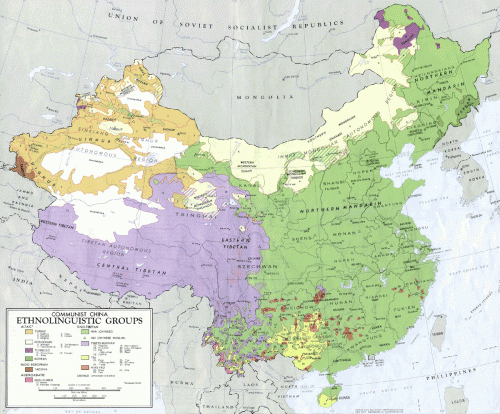
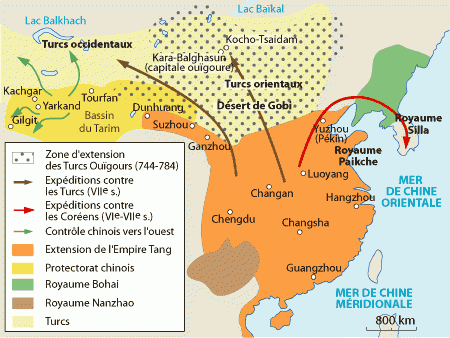 La restauration vient avec la dynastie Tang, de 618 à 907, véritablement âge d’or de la civilisation chinoise. Les empereurs sont alors les alliés des Ouïghours contre les autres peuples turcs. L’influence chinoise s’étend jusqu’en Ouzbékistan. Elle s’exerce aussi sur la Corée, le Vietnam et le Cambodge. De 907 à 960 survient une nouvelle période de chaos, mais qui ne sera que de courte durée.
La restauration vient avec la dynastie Tang, de 618 à 907, véritablement âge d’or de la civilisation chinoise. Les empereurs sont alors les alliés des Ouïghours contre les autres peuples turcs. L’influence chinoise s’étend jusqu’en Ouzbékistan. Elle s’exerce aussi sur la Corée, le Vietnam et le Cambodge. De 907 à 960 survient une nouvelle période de chaos, mais qui ne sera que de courte durée.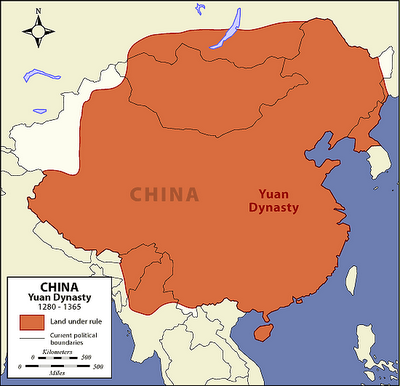 De 1279 à 1368, c’est la domination d’une dynastie mongole, les Yuan. Pékin devient la capitale de l’empire sous Qubilaï Khan. Entre 1274 et 1281, les Mongols avaient tenté d’inclure le Japon dans leur orbe mais les vents du Pacifique, les kamikazes, s’étaient levés et avaient détruit la flotte mongole en mer, évitant au Japon une conquête violente et préservant, du coup, sa spécificité en Asie orientale. Les Mongols douteront dorénavant de leur propre invincibilité et les Japonais acquerront un sentiment d’invulnérabilité qu’ils garderont jusqu’en 1945.
De 1279 à 1368, c’est la domination d’une dynastie mongole, les Yuan. Pékin devient la capitale de l’empire sous Qubilaï Khan. Entre 1274 et 1281, les Mongols avaient tenté d’inclure le Japon dans leur orbe mais les vents du Pacifique, les kamikazes, s’étaient levés et avaient détruit la flotte mongole en mer, évitant au Japon une conquête violente et préservant, du coup, sa spécificité en Asie orientale. Les Mongols douteront dorénavant de leur propre invincibilité et les Japonais acquerront un sentiment d’invulnérabilité qu’ils garderont jusqu’en 1945.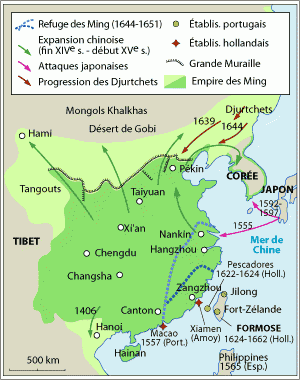 Les fonds alloués aux immenses navires de Zheng He sont consacrés à la Grande Muraille, à l’agriculture, aux champs de riz, à l’irrigation, aux canaux. La Chine n’aura plus de grands projets mondiaux : elle revient à ses valeurs paysannes, nées lors de la période axiale de son histoire. Durant l’ère Ming, des contacts auront lieu entre Européens et Chinois par l’intermédiaire de l’Ordre des Jésuites. Matteo Ricci, jésuite italien, amorce une politique de conversion, faisant, dès ce moment-là, du christianisme un facteur qui compte en Chine. C’est aussi l’époque où notre compatriote, le Père Verbist, deviendra le principal astronome de la cour chinoise. Pour convertir la Chine, il aurait fallu forger un syncrétisme. Le Pape a refusé. L’Empereur n’a pas compris ce refus pontifical. Le christianisme sera interdit en 1724.
Les fonds alloués aux immenses navires de Zheng He sont consacrés à la Grande Muraille, à l’agriculture, aux champs de riz, à l’irrigation, aux canaux. La Chine n’aura plus de grands projets mondiaux : elle revient à ses valeurs paysannes, nées lors de la période axiale de son histoire. Durant l’ère Ming, des contacts auront lieu entre Européens et Chinois par l’intermédiaire de l’Ordre des Jésuites. Matteo Ricci, jésuite italien, amorce une politique de conversion, faisant, dès ce moment-là, du christianisme un facteur qui compte en Chine. C’est aussi l’époque où notre compatriote, le Père Verbist, deviendra le principal astronome de la cour chinoise. Pour convertir la Chine, il aurait fallu forger un syncrétisme. Le Pape a refusé. L’Empereur n’a pas compris ce refus pontifical. Le christianisme sera interdit en 1724.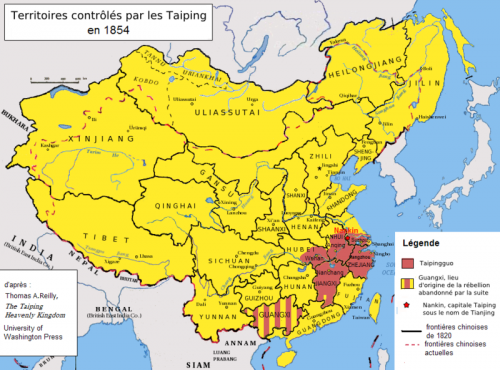
 Atteindre l’objectif que s’est fixé Deng Xiaoping passe par une restructuration des relations entre peuples de la masse continentale eurasienne. L’instrument de cette restructuration est le « Groupe de Shanghai », d’une part, et le BRIC (Brésil, Russie, Inde, Chine), d’autre part. Face à ces relations inter-eurasiennes ou eurasiennes/latino-américaines, l’américanosphère table sur une instrumentalisation militante et offensive de l’idéologie des droits de l’homme. Pour l’idéologie occidentale, qui s’estime affranchie de toute croyance de nature religieuse, les droits de l’homme sont des principes intangibles au même titre que ceux des théologiens fondamentalistes chrétiens ou musulmans. En réalité, derrière cette nouvelle religion occidentale, rigide parce que refusant toute interprétation différente ou toute adaptation pragmatique, se profile un cynisme mu par des intérêts économiques et géopolitiques. Le Président américain Jimmy Carter avait recréé cette idéologie de toutes pièces pour miner la cohésion de l’URSS ou pour subvertir tous les Etats hostiles aux Etats-Unis et tous les régimes insuffisant dociles. La Chine a toujours bien perçu cette nouvelle idéologie occidentale comme un instrument d’immixtion permanente dans les affaires des autres pays. Elle a riposté en estimant que chaque aire dominée par un hégémon particulier (ou chaque espace civilisationnel) devait pouvoir interpréter les droits de l’homme à sa manière, selon ses propres critères et donc, in fine, selon des critères nés lors de la « période axiale » de l’histoire spécifique de cette aire civilisationnelle. La Chine a opté pour le polycentrisme des valeurs et pour la pluralité des interprétations des droits de l’homme. Ceux-ci ne peuvent servir à subvertir les fondements des civilisations autres que l’Occident.
Atteindre l’objectif que s’est fixé Deng Xiaoping passe par une restructuration des relations entre peuples de la masse continentale eurasienne. L’instrument de cette restructuration est le « Groupe de Shanghai », d’une part, et le BRIC (Brésil, Russie, Inde, Chine), d’autre part. Face à ces relations inter-eurasiennes ou eurasiennes/latino-américaines, l’américanosphère table sur une instrumentalisation militante et offensive de l’idéologie des droits de l’homme. Pour l’idéologie occidentale, qui s’estime affranchie de toute croyance de nature religieuse, les droits de l’homme sont des principes intangibles au même titre que ceux des théologiens fondamentalistes chrétiens ou musulmans. En réalité, derrière cette nouvelle religion occidentale, rigide parce que refusant toute interprétation différente ou toute adaptation pragmatique, se profile un cynisme mu par des intérêts économiques et géopolitiques. Le Président américain Jimmy Carter avait recréé cette idéologie de toutes pièces pour miner la cohésion de l’URSS ou pour subvertir tous les Etats hostiles aux Etats-Unis et tous les régimes insuffisant dociles. La Chine a toujours bien perçu cette nouvelle idéologie occidentale comme un instrument d’immixtion permanente dans les affaires des autres pays. Elle a riposté en estimant que chaque aire dominée par un hégémon particulier (ou chaque espace civilisationnel) devait pouvoir interpréter les droits de l’homme à sa manière, selon ses propres critères et donc, in fine, selon des critères nés lors de la « période axiale » de l’histoire spécifique de cette aire civilisationnelle. La Chine a opté pour le polycentrisme des valeurs et pour la pluralité des interprétations des droits de l’homme. Ceux-ci ne peuvent servir à subvertir les fondements des civilisations autres que l’Occident.  Le chef du Kremlin, Dimitri Medvedev s’est rendu récemment à Nouvelle Delhi pour une visite de quelques jours durant lesquels, disent les sources gouvernementales indiennes, les partenaires russes et indiens signeront de nombreux contrats, pour une valeur totale de 30 milliards de dollars, surtout dans les domaines de la défense et de l’énergie nucléaire.
Le chef du Kremlin, Dimitri Medvedev s’est rendu récemment à Nouvelle Delhi pour une visite de quelques jours durant lesquels, disent les sources gouvernementales indiennes, les partenaires russes et indiens signeront de nombreux contrats, pour une valeur totale de 30 milliards de dollars, surtout dans les domaines de la défense et de l’énergie nucléaire. 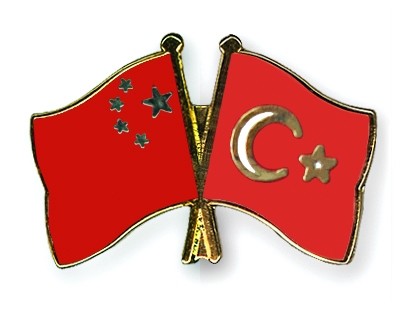

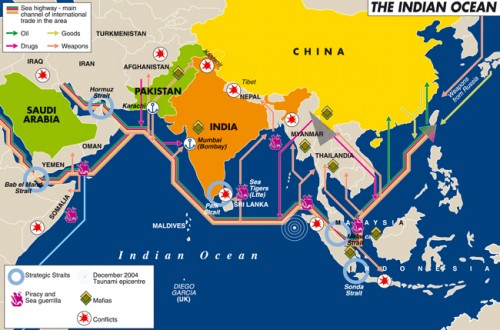

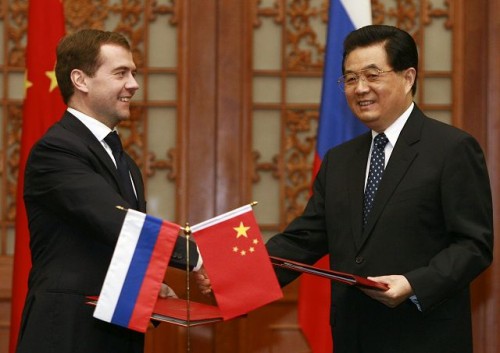
 Yukio Mishima è un intramontabile della cultura mondiale, oggetto di ripubblicazioni a getto continuo, convegni di studio, rappresentazioni teatrali e altre forme di tributo. Un omaggio inconsueto ed inaspettato alla figura dello scrittore giapponese viene dal romanzo vincitore dell'ultimo Premio Urania, Lazarus di Alberto Cola (Mondadori, pp. 317, € 4,20).
Yukio Mishima è un intramontabile della cultura mondiale, oggetto di ripubblicazioni a getto continuo, convegni di studio, rappresentazioni teatrali e altre forme di tributo. Un omaggio inconsueto ed inaspettato alla figura dello scrittore giapponese viene dal romanzo vincitore dell'ultimo Premio Urania, Lazarus di Alberto Cola (Mondadori, pp. 317, € 4,20). 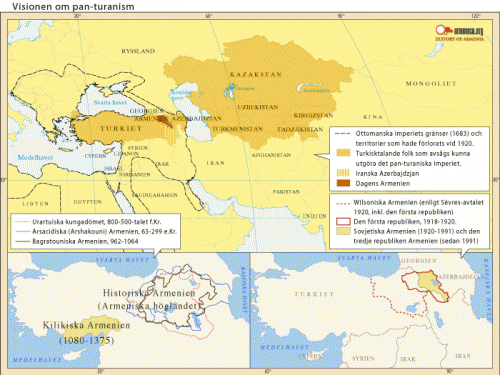
.jpg)
 bewaffnet, um die Sowjetunion in das afghanische Abenteuer zu locken. Nun sah er in dem Beschuss ein Zeichen dafür, »dass das nordkoreanische Regime einen Punkt des Wahnsinns erreicht hat«. Die rational kaum zu ergründenden Handlungen zeigen Brzezinski, »dass das Regime außer Kontrolle ist.« (3) So einfach scheint es aber nicht zu sein. Nur einen Tag vor der nordkoreanischen Provokation hatte Südkorea unter dem Codenamen »Hoguk« rund 70.000 Soldaten für ein Manöver mit »scharfem Schuss« in diesem umstrittenen Grenzgebiet zusammengezogen. An dieser jährlichen Militärübung nahmen Dutzende von südkoreanischen und US-Kriegsschiffen und rund 500 Flugzeuge teil. (4) Ursprünglich war auch die Teilnahme von US-Truppen geplant, die aber offenbar im letzten Augenblick absagten. (5) Anstatt unreflektiert auf Nordkorea zu verweisen, hätte eine verantwortliche Berichterstattung die Hintergründe aufhellen beziehungsweise eine neutrale Untersuchung for-dern müssen. Muss nicht auch das südkoreanische Manöver »Hoguk« in einem umstrittenen Grenzgebiet als Provokation angesehen werden? Die Insel Yeonpyeong liegt in unmittelbarer Nähe des nordkoreanischen Festlandes. Einseitig hatte Ende des Koreakrieges im Jahr 1953 US-General Mark Clark die umstrittene Grenzziehung zu Nordkoreas Nachteil festgelegt. Nordkorea hat diese Seegrenze nie anerkannt.
bewaffnet, um die Sowjetunion in das afghanische Abenteuer zu locken. Nun sah er in dem Beschuss ein Zeichen dafür, »dass das nordkoreanische Regime einen Punkt des Wahnsinns erreicht hat«. Die rational kaum zu ergründenden Handlungen zeigen Brzezinski, »dass das Regime außer Kontrolle ist.« (3) So einfach scheint es aber nicht zu sein. Nur einen Tag vor der nordkoreanischen Provokation hatte Südkorea unter dem Codenamen »Hoguk« rund 70.000 Soldaten für ein Manöver mit »scharfem Schuss« in diesem umstrittenen Grenzgebiet zusammengezogen. An dieser jährlichen Militärübung nahmen Dutzende von südkoreanischen und US-Kriegsschiffen und rund 500 Flugzeuge teil. (4) Ursprünglich war auch die Teilnahme von US-Truppen geplant, die aber offenbar im letzten Augenblick absagten. (5) Anstatt unreflektiert auf Nordkorea zu verweisen, hätte eine verantwortliche Berichterstattung die Hintergründe aufhellen beziehungsweise eine neutrale Untersuchung for-dern müssen. Muss nicht auch das südkoreanische Manöver »Hoguk« in einem umstrittenen Grenzgebiet als Provokation angesehen werden? Die Insel Yeonpyeong liegt in unmittelbarer Nähe des nordkoreanischen Festlandes. Einseitig hatte Ende des Koreakrieges im Jahr 1953 US-General Mark Clark die umstrittene Grenzziehung zu Nordkoreas Nachteil festgelegt. Nordkorea hat diese Seegrenze nie anerkannt. Cina
Cina C'è anche il tentativo di diversificare le proprie riserve valutarie, riducendo la parte in dollari?
C'è anche il tentativo di diversificare le proprie riserve valutarie, riducendo la parte in dollari?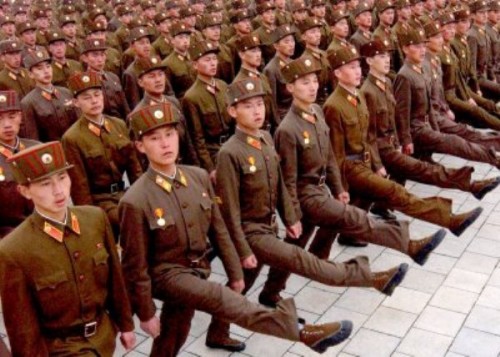
 Le parole non bastano. Così parlò Yukio Mishima, e il 25 novembre del 1970 si uccise davanti alle telecamere col rito tradizionale del seppuku. Alle parole seguì il gesto e la scrittura debordò nella vita per compiersi nella morte. Il suicidio eroico di Mishima scosse la mia generazione, versante destro. Era il nostro Che Guevara, e sposava in capitulo mortis la letteratura e l’assoluto, l’esteta e l’eroe, il Superuomo e la Tradizione. Lasciò un brivido sui miei quindici anni. Poi diventò un mito a diciassette, quando uscì in Italia Sole e acciaio, il suo testamento spirituale. È uno di quei libri che trasforma chi lo legge; gustato riga per riga, non solo letto ma vissuto, come un libro d’istruzioni per montare la vita, pezzo per pezzo. Altro che Ikea, il pensare si riversava nell’agire. Le parole non bastano.
Le parole non bastano. Così parlò Yukio Mishima, e il 25 novembre del 1970 si uccise davanti alle telecamere col rito tradizionale del seppuku. Alle parole seguì il gesto e la scrittura debordò nella vita per compiersi nella morte. Il suicidio eroico di Mishima scosse la mia generazione, versante destro. Era il nostro Che Guevara, e sposava in capitulo mortis la letteratura e l’assoluto, l’esteta e l’eroe, il Superuomo e la Tradizione. Lasciò un brivido sui miei quindici anni. Poi diventò un mito a diciassette, quando uscì in Italia Sole e acciaio, il suo testamento spirituale. È uno di quei libri che trasforma chi lo legge; gustato riga per riga, non solo letto ma vissuto, come un libro d’istruzioni per montare la vita, pezzo per pezzo. Altro che Ikea, il pensare si riversava nell’agire. Le parole non bastano. 



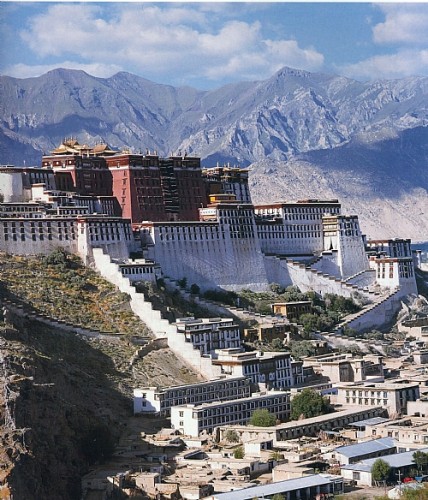 In questi ultimi decenni vari personaggi hanno visto il Tibet come uno degli ultimi territori del Pianeta dove si siano conservate le antiche tradizioni dei cosiddetti “indoeuropei”.
In questi ultimi decenni vari personaggi hanno visto il Tibet come uno degli ultimi territori del Pianeta dove si siano conservate le antiche tradizioni dei cosiddetti “indoeuropei”. 